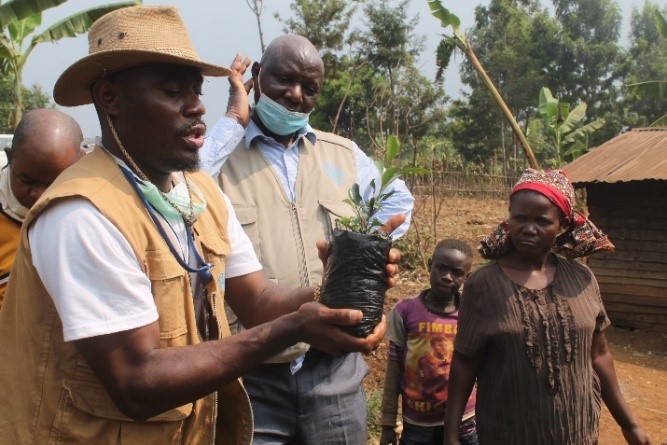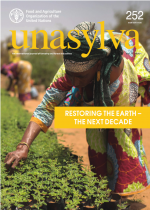TRI featured in Unasylva
The Restoration Initiative is featured in a new, special edition of FAO’s Unasylva journal of forestry that is focused on restoration.

Photo: TRI / FAO
The Restoration Initiative (TRI) Unasylva article describes the flexible framework addressing barriers to restoration, inter-agency and inter-country partnerships, and delivery of support to participating countries, communities and landscapes that are a hallmark of the TRI programme. Also highlighted is project work in China, Democratic Republic of the Congo, and Kenya, showing the diversity of restoration approaches and objectives in TRI.
 Photo: FAO
Unasylva
Photo: FAO
Unasylva
 Photo: FAO
Photo: FAO
Issue no. 252, Restoring the Earth – The Next Decade
Coming at the start of the UN Decade on Ecosystem Restoration and in the midst of the global Covid-19 pandemic that has highlighted the need to 'build back better,' the Unasylva issue seeks to catalyse learning and action on restoration. A 2015 issue of Unasylva (issue 245) was the first to focus on forest landscape restoration (FLR), and it followed on the launch of the Bonn Challenge and New York Declaration of Forests call to bring 150 million ha of degraded land under restoration by 2020 and 350 million ha under restoration by 2030. Since then, awareness and support for restoration have only grown, and pioneering restoration initiatives including TRI are helping to lead the way.
As one of a handful of flagship global restoration initiatives, TRI is a vital platform for piloting innovative tools and approaches to addressing restoration challenges. Some of the innovations being advanced through TRI, highlighted in the Unasylva article, include: a harmonised set of tools for monitoring restoration progress; an online course on FLR developed and delivered in partnership with Yale University’s Environmental Leadership & Training Initiative (ELTI); a new tool – the Species Threat Abatement and Recovery (STAR) metric – for assessing priority areas for threatened species and designing restoration projects to help better conserve biodiversity; and an online community of practice and learning on FLR.
TRI partners welcome this chance to share TRI programme experiences and learning on advancing restoration in support of the wider restoration movement.



